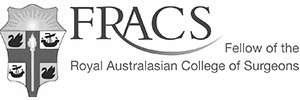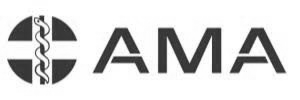Bicep Tendon Tears
What are Bicep Tendon Tears?
A biceps tear – also called a biceps rupture – is a tear or break in the tendon that connects your biceps muscle in the upper arm to your shoulder or elbow.
Tendons are strong cords of tissue that connect muscles and bones.
Bicep Tears can be an overuse injury that overtime can begin to wear and eventually break. Biceps ruptures can be repaired successfully with surgery.
Who does Bicep Tendon Tears Affect?
The biceps muscle, located in the front of the upper arm allows you to bend the elbow and rotate the arm. Biceps tendons attach the biceps muscle to the bones in the shoulder and in the elbow.
Biceps tendon tears at the shoulder relate to one of the tendons that attach the biceps muscle to the bones in the shoulder,
- Long head tendon that attaches the muscle to the top of the shoulder socket (glenoid)
- Short head that attaches it to the shoulder blade.
Tears are more likely to occur in the long head of the biceps tendon. Tears of the short head of the biceps are very rare, but even in case of a complete tear of the long head, the short head of the biceps may allow you to continue using your biceps muscle and only need simple treatments to relieve symptoms.
What Causes Bicep Tendon Tears
Biceps tendon tear can be caused by
- Injury such as falling down with your arm outstretched
- During the act of lifting heavy objects.
- Overuse of a tendon may fray and eventually tear.
Other shoulder problems such as:
- Tendonitis,
- Shoulder impingement,
- Rotator Cuff Injuries
Additional risk factors include:
- Advancing age
- Heavy overhead activities,
- Repetitive overhead sports
- Smoking,
- Use of corticosteroids
Types of Bicep Tendon Tears
Biceps tear can be
- Partial Biceps tendon tears - not a complete break the tendon
- Complete Bicep tendon tears - break the tendon into two parts.
Symptoms of Bicep Tendon Tears
The most common symptom of Bicep Tendon Tears are
- sudden, severe pain in the upper arm or at the elbow, depending on where the tendon is injured.
- Hearing a "pop".
- Swelling,
- Visible bruising,
- Weakness in the shoulder or elbow,
- Trouble turning your arm palm or palm down.
- Bulge referred to as a "Popeye Muscle," may also appear in your arm, because the tendon is no longer holding the muscle in place properly.
How are Bicep Tendon Tears Diagnosed
Patients who suspect they have a Bicep Tendon Tear require a fully diagnosis this can include:
Medical History
Your doctor will ask questions about:
- Current symptoms and what if any activities aggravate your condition, or how injury was sustained,
- Obtain a medical history including family or genetic links etc
- Determine any related former conditions diseases and treatments,
- Record health metrics (weight, mobility, blood pressure, heart rate, etc)
- Confirm medications, past and present
- Record habits, diet, exercise and other related actions
- Understand any risk factors or related complications or links
Physical Examination
Your doctor perform comprehensive physical evaluation that can include:
- Examining the affected area,
- Evaluate any swelling, pain, bruising or other features, etc
- Determine impact of condition such as range or motion, pain, diet, lifestyle,
- Record levels or severity of any symptoms
Diagnostic Testing
Once your doctor has completed the physical examination further tests maybe required. These tests can help your doctor determine or eliminate possible causes or impacts, or complete the diagnostic process and can include:
- Pathology - blood or other sample tests, lung functions, etc
- X-Ray -
- Ultrasound -
- Magnetic Resonance Imaging (MRI)
Once a final diagnosis has been completed your doctor can discuss with you and recommend any treatment options.
Non Surgical Treatment for Bicep Tendon Tears
Treatment for your condition can begin immediately and can include:
- Pain Medication - to treat pain or discomfort including nonsteroidal anti-inflammatory medications (NSAIDs) can relieve some
- Inflammation Medication - may be prescribed to alleviate swelling including antibiotics for infection control
- R.I.C.E. - To reduce the pain and swelling surrounding the injured area.
- Rest: Rest the affected area as more damage could result from putting pressure on the injury.
- Ice: Ice should be applied over a towel to the affected area
- Compression: Wrapping with an elastic bandage or an elasticated tubular bandage can help to minimize the swelling.
- Elevation: Elevating the injured area above heart level to help with any swelling and pain
- Exercise - may be recommended
- Bracing - may be recommended to brace
- Taping - may be applied over the affected areas to reduce pain.
- Orthotics - may be prescribed.
- Injection Therapies - may be prescribed to reduce inflammation and accelerate the healing of the patellar tendon.
- Platelet-Rich Plasma Therapy - may be prescribed to accelerate healing.
- Dry Needling - may be recommended to break up or destroy degenerative structures.
- Hyperthermia Thermotherapy: may be recommended to heat and/or cool damaged tissues while allowing the surface level tissues to stay cool.
- Extracorporeal Shockwave Treatment - may be recommended help to stimulate regeneration to damaged or torn soft tissue.
- Aspiration - may be used to remove fluid and reduce swelling or inflammation to relieve pain.
Surgical Treatment for Bicep Tendon Tears
In cases where either a conservative treatment has not resolved the problem or where a patient best or only treatment option is surgery. Depending on the severity of the lesion, SLAP tears may require:
- Shoulder Debridement (via an Arthroscopy)
- Shoulder Repair Surgery
- Biceps Transfer (Tenodesis)
What if Bicep Tears go Untreated?
If a SLAP tear is not treated, it can lead to a variety of short- and long-term issues, including
- shoulder dislocation or instability,
- decreased range of motion,
- chronic pain, and
- adhesive capsulitis (frozen shoulder).





